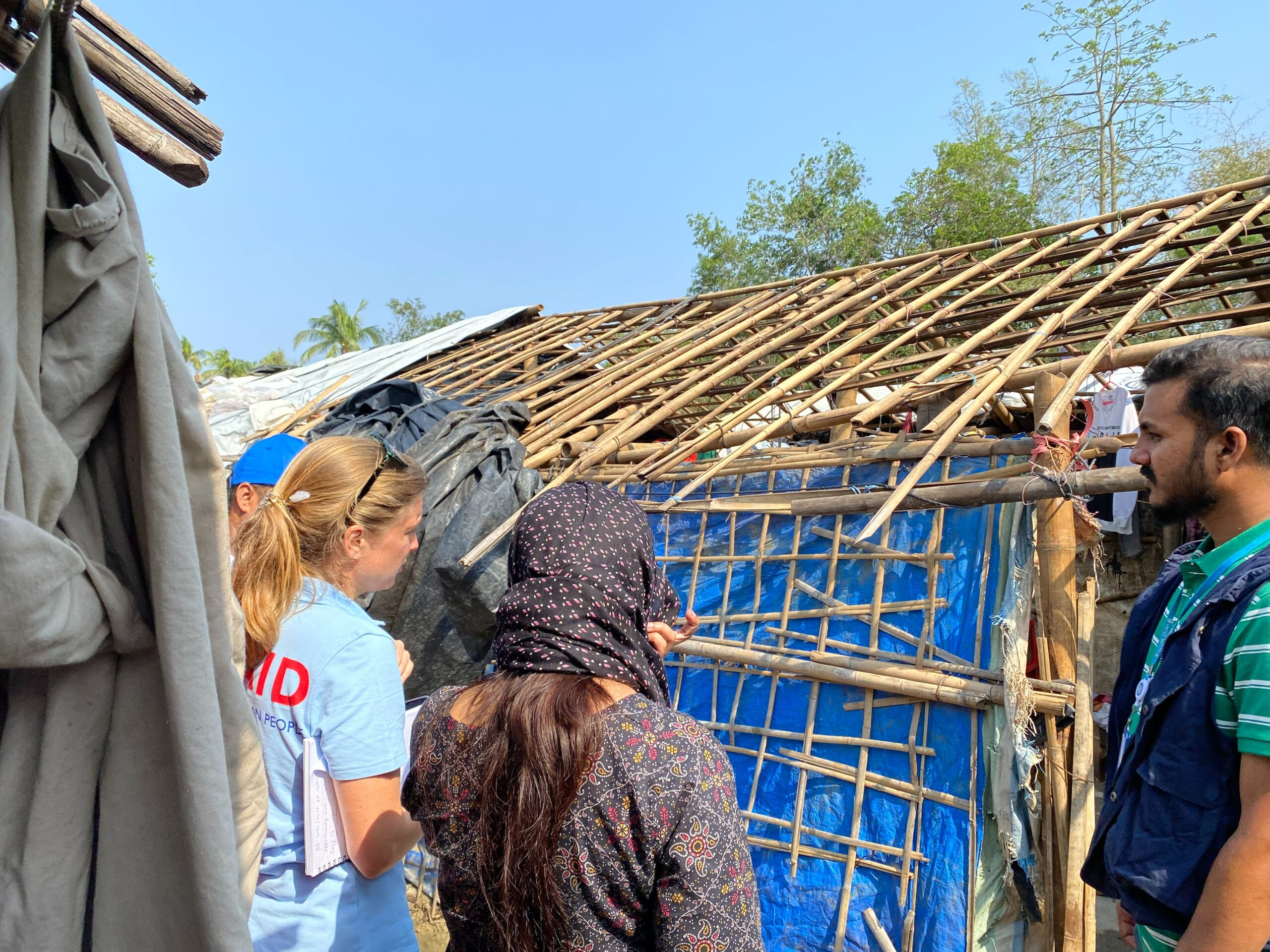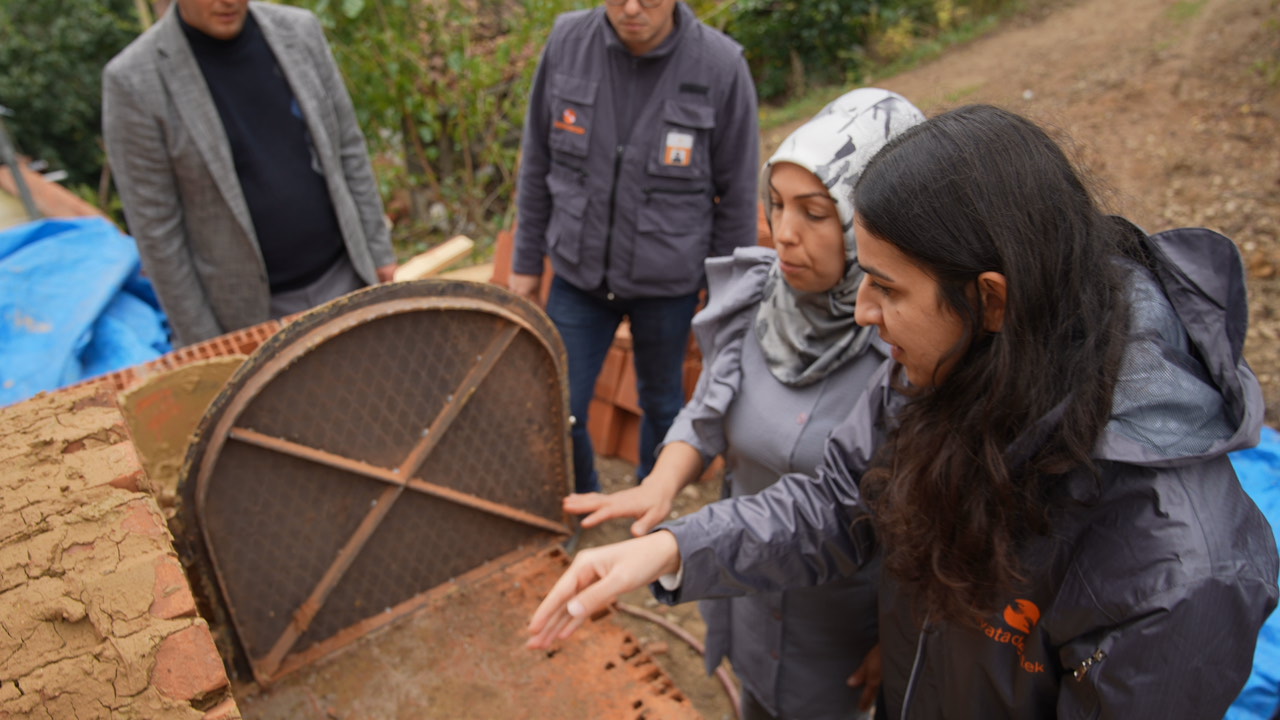What we’re watching: Weekly disaster update, June 5

We know all too well that disaster can strike anytime, anywhere in the world. Some disasters make headlines; others do not. Here at the Center for Disaster Philanthropy (CDP), we monitor the status of disasters worldwide and compile a list of the ones we’re tracking weekly, along with relevant disaster-related media coverage.
Here’s what we’re watching for the week of June 5, 2023.
New or Emerging Disasters
Atlantic Hurricane Season: The traditional Atlantic hurricane season runs from June 1 to Nov. 30. At CDP, we are reframing our thinking around disaster seasons, given the frequency and intensity of natural hazards outside such periods. Year-round preparedness is now a necessity and arguably always has been.
As we enter the month of June, disaster preparedness is becoming more urgent. This year’s Atlantic hurricane season is expected to be normal due to competing factors — warm Pacific water temperatures that suppress storm development along with some factors that fuel it, like warm Atlantic water temperatures.
The National Oceanic and Atmospheric Administration (NOAA) predicts a near-normal season with 12 to 17 named storms, five to nine of which could become hurricanes. Researchers at Colorado State University (CSU) predict that 2023 hurricane activity “will be about 100 percent of the average season from 1991–2020.” The CSU team predicts 15 named storms, with seven expected to become hurricanes.
On June 2, a tropical storm formed in the Gulf of Mexico. Tropical Storm Arlene became the first named storm of the season. Arlene degenerated into a remnant “low over the southeast Gulf” on June 3.
CDP’s Hurricanes, Typhoons and Cyclones issue insight has further information about this natural hazard and recommendations for philanthropy.
For more, see our 2023 Atlantic Hurricane Season disaster profile.
Flooding – Haiti: Heavy rains led to widespread flooding and landslides across Haiti, leaving at least 15 dead and several missing. Most of Haiti’s departments have faced severe flooding, rockslides and landslides. According to Haiti’s General Directorate of Civil Protection (DGPC), more than 37,000 people were affected, 13,390 were displaced and 1,219 houses flooded. The DGPC declared the activation of the National Emergency Operations Center on June 3, and humanitarian actors are mobilizing supplies.
The widespread flooding is especially concerning given the country is facing a major humanitarian crisis, with almost half the population needing humanitarian assistance. According to the latest Integrated Food Security Phase Classification (IPC) analysis, 4.9 million people in Haiti are experiencing high levels of acute food insecurity. Disasters, including the recent deadly flooding, exacerbate the underlying vulnerabilities.
Humanitarian activities in the country have been criticized for too often bypassing the Haitian government and excluding Haitian stakeholders, including local actors. A recent paper by Sabina C. Robillard and Jessica Hsu describes why the localization agenda is so important in Haiti, summarizes the country’s localization state and offers reforms that could move toward a more locally-led humanitarian response.
Previous/Ongoing Disasters
Cyclone Mocha – Myanmar: Three weeks since Extremely Severe Cyclone Mocha made landfall between Kyaukpyu township in Myanmar and Cox’s Bazar in Bangladesh, the disaster and survivor’s needs have largely fallen out of the news cycles.
Before the storm hit Myanmar, 80% of people in Rakhine State lived in poverty, and 200,000 were internally displaced. Even in the best conditions, recovery could take years, considering most affected people were already highly vulnerable.
On June 2, the United Nations said, “aid access is uncertain, disease is spreading, and a major food crisis remains a very real threat.” With the monsoon looming, delivering humanitarian assistance, securing access to affected populations, and ensuring support for rural livelihoods, including planting food crops, is becoming urgent.
Due to the Myanmar government’s slowness in approving humanitarian actors’ distribution plans and granting access to some affected areas, authorities and other groups at the local level are continuing to clear debris and support the recovery effort, especially in rural areas.
For more, see our Cyclone Mocha disaster profile.
Typhoon Mawar – Guam and the Northern Mariana Islands: According to NOAA, “Mawar is one of the strongest tropical cyclones in the Northern Hemisphere on record that occurred in the month of May as well as the most intense tropical cyclone worldwide this year so far.” The storm was the strongest to strike Guam, the U.S. Pacific territory, in at least two decades.
Over a week after Mawar brought heavy wind and rain to the island, thousands remained without power, water and cellphone service. Officials said restoring basic services to some parts of the island could take several weeks.
After passing the Philippines and Taiwan, Mawar headed towards Japan, where more than 1.2 million people were ordered to evacuate on June 2. The storm brought heavy rain and the threat of landslides and flooding to the country.
In an operational update call last week co-hosted by FEMA and National Voluntary Organizations Active in Disaster (NVOAD), organizations shared about communication challenges in Guam. They said WhatsApp was proving an effective platform. People located away from urban or commercial centers, particularly in the island’s north, were particularly affected and will need recovery support.
Several NVOAD partners are in Guam providing assistance. Disaster declarations were approved for Guam (DR-4715) and the Commonwealth of the Northern Mariana Islands (DR-4716).
Wildfires – Canada: As of June 4, there were 419 active fires across Canada, including 250 rated as “out of control,” according to the Canadian Interagency Forest Fire Centre (CIFFC). The CIFFC data show that Quebec had the most active fires of any province, with 164.
Wildfires in northwestern parts of Quebec prompted thousands to evacuate over the weekend, including around 5,500 residents of the Abitibi-Temiscamingue region and 4,500 people in the North Shore community of Sept-Iles. Within the next few days, more than 1,000 personnel will be battling the wildfires in Quebec, including 100 firefighters from France.
Meanwhile, in Nova Scotia, fire officials are working to get the largest wildfire ever recorded in the Atlantic coast province under control. The Barrington Lake fire in the province’s southwest is now considered Nova Scotia’s largest wildfire, having burned more than 75 square miles (200 square kilometers). The fire has consumed 200 structures in suburban Halifax, and 16,000 residents there have been evacuated. Officials on June 3 said the fire in the Halifax area was largely contained thanks to recent rain.
For more, see our 2023 North American Wildfires disaster profile.
In addition to the disasters listed above, we actively monitor the following disasters or humanitarian emergencies. For more information, see the relevant disaster profiles, which are updated regularly.
- Afghanistan Humanitarian Crisis
- Horn of Africa Hunger Crisis
- 2023 Turkey-Syria Earthquake
- Ukraine Humanitarian Crisis
- 2023 US Tornadoes
U.S. Midwest Low-Attention Disasters
The Midwest is regularly faced with low-attention disasters that affect people across the region. CDP’s Midwest Early Recovery Fund (ERF) effectively funds efforts that catalyze equitable disaster recovery.
These are some of the latest disasters and related news the ERF team is monitoring:
- On May 26, the National Weather Service declared a flash flood emergency in western Hitchcock County, Nebraska. The area received up to 10 inches of rain. Flash flood warnings were also in place in Decatur and Rawlins counties in Kansas. The flooding covered roads, washed out a bridge and required several rescues.
- Calhoun County Public Health, Cass County Board of Health and Van Buren County Hospital will each receive a $50,000 grant through the Empower Rural Iowa initiative as part of a pilot program to decrease emergency response times in rural areas.
Complex Humanitarian Emergencies – Chad
Many places worldwide are experiencing emergencies caused by conflict, climate change, drought, famine, economic challenges and other conditions that combine to create a complex humanitarian emergency (CHE). CDP maintains complete profiles on several CHEs, and what CDP considers Level 1 CHEs are profiled in this weekly blog post and tracked.
On April 15, fighting erupted between the Sudanese Army Forces and the Rapid Support Forces in multiple locations across Sudan. In addition to the more than 1.2 million people displaced within Sudan, another 114,699 have fled to neighboring Chad as of May 29.

Most of the refugees arriving in Chad are women and children. They are arriving so quickly that humanitarians are struggling to ensure they are in safe places before the rains come in late June when much of the remote border region becomes cut off.
Médecins Sans Frontières says among those arriving in Chad are people with injuries as a result of the fighting in Sudan who need medical treatment. Funding is urgently needed to provide basic assistance to refugees in Chad.
As of June 2, donors had funded just 12% of Chad’s 2023 Humanitarian Response Plan (HRP). Of the funding distributed from the HRP, UN agencies are the largest beneficiaries. Supporting local actors in Chad is also important to ensure aid is efficient and effective and strengthens the leadership and capacity of leaders at the local level.
In 2022, Chad experienced one of the worst floods in its recent history. The unprecedented flooding due to heavy rains from July until mid-September 2022 affected 19 of 23 provinces in the country, displaced hundreds of thousands and damaged more than 864,000 acres (350,000 hectares) of agricultural land. Recovery needs include livelihood and shelter support, strengthening resilience, and infrastructure repair and restoration.
Upcoming webinars

June 8: Survivor and community-led response: Putting people first in a crisis

July 13: The gendered nature of climate change

Aug. 10: Disaster case management: Navigating recovery one person at a time
What We’re Reading
- Climate Shocks Are Making Parts of America Uninsurable. It Just Got Worse. – The New York Times: State Farm, the largest insurer in California, said it would stop offering new coverage. It’s part of a broader trend of companies stepping away from dangerous areas. Louisiana’s insurance commissioner said the state’s insurance market “is in crisis.”
- Climate adaptation needs urgent philanthropy support – and offers the key to climate justice – Alliance: Climate-related disasters usually most negatively affect marginalized people. Tom Mitchell of the International Institute for Environment and Development and Heather McGray of the Climate Justice Resilience Fund call on philanthropy “to grow its support for adaptation and resilience, and to do so in ways that foster equity and justice.”
- The world’s most neglected displacement crises 2022 – Norwegian Refugee Council: This year’s report on the ten most neglected displacement crises in the world is once again dominated by African countries, and it also sees a return to the list of countries in Latin America. Seven out of ten countries in the report represent the smallest humanitarian appeals, each around 1% or less of what’s been requested for humanitarian aid globally.
- UN agencies warn of starvation risk in Sudan, Haiti, Burkina Faso and Mali, call for urgent aid – AP: The World Food Program and the Food and Agriculture Organization warned of rising food emergencies, including starvation in Sudan due to the outbreak of war and in Haiti, Burkina Faso and Mali due to restricted movements of people and goods. They called for “urgent attention to save both lives and jobs.”
Black-backed woodpeckers love pyro diversity. So, forest managers use the information on the woodpecker to guide their post-fire planning.
